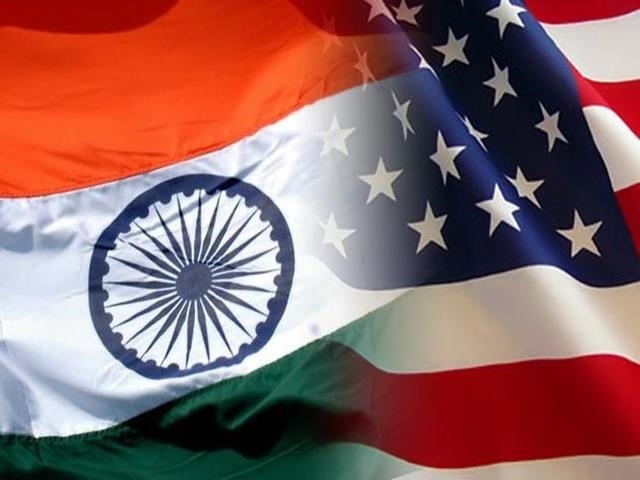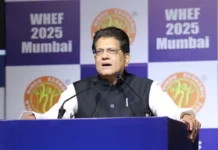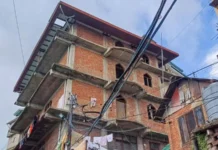 ASTORIA, Oregon: The historic port city of Astoria in the North Western American State of Oregon is trying to revive its more than a century old Indian connection which was forgotten till a few years ago. Till 2013, the city of Astoria knew little about the Indians who had lived in this community about a century ago, said Ellen Rosenblum a former city councilwoman.
ASTORIA, Oregon: The historic port city of Astoria in the North Western American State of Oregon is trying to revive its more than a century old Indian connection which was forgotten till a few years ago. Till 2013, the city of Astoria knew little about the Indians who had lived in this community about a century ago, said Ellen Rosenblum a former city councilwoman.
Portland-based historian Johanna Ogden sent to Astoria city council a research paper she wrote about the city’s connection with India’s freedom struggle telling them that 2013 incidentally was the 100 years of a meeting held in the city that laid the foundation of the historic Ghadar movement.
“We knew relatively little about the Indians who had lived in this community. It opened up a whole new world for us in terms of our story. The story that we tell about ourselves here and it added a significant part to contribution to the history of our city,” Rosenblum told PTI. No longer a member of the Astoria City Council, Rosenblum is now devoting most of her time in reviving the historic association between India and Astoria, which is on the confluence of the Columbia River and Pacific Ocean.
It was a thriving port city in early 20th century and had attracted a quite a few young Indians to work in lumber mills. While much of the old part of the city has been destroyed, there are still remains of the neighborhood and homes then known as Hindu Ally where these Indians lived and worked in mills.
“The Indians had come to Astoria looking for work. This was a time in the early 1900 that they were here for perhaps a little bit longer. There were Indians working on the riverfront, in the canneries and in the mills in Oregon along the Columbia River. They were here from Astoria in the far west to the Dalles, Oregon,” she said. “The community here particularly worked in the Hammond lumber mill,” Rosenblum said.
The Indians working in these m
ills came in contact with the vibrant Finnish community at the time of an active international labor movement. “What we understand is that they were all working alongside of each other. The Finnish workers were talking about their fight with Russia. The Americans were talking to them about their freedom from Great Britain. And the Indians wanted freedom from the British. So they had some kind of a common goal,” she said.
The seeds of the Ghad
ar Party were laid in the Finnish Socialist Hall on the banks of the Columbia River in 1913. The five-story building was gutted in a fire decades ago. Motel 6, operated by an Indian American stands there now, she said.”Astoria has a rich history. But it is start of the Ghadar Party in Astoria in 1913 which we are proud of,” former Astoria Mayor Willis L Van Dusen told PTI.
As Mayor of Astoria, Dusan issued a proclamation in 2013 to recognize the formation of the Ghadar Party here and installed a plaque in a park near the venue of the first meeting a century ago. Dusan, Rosenblum and historian Johanna Ogden and others have teamed up to form Ghadar Memorial Foundation of Austria headed by local community leader and successful business Bahadur Singh to revive the historical Indian aspect of the city.
“It was part of forgotten history. It was definitely not known as part of Oregon’s history,” historian Ogden told PTI. “It was in late May, early June 1913 (that the first meeting took place). The organizing impetus probably came out of a town called St John’s, which is upriver about 90 miles just outside of Portland where there was a big riot against Indians in 1910. The Indians who lived there pushed back they demand of prosecution by the local authorities,” she said.
“The public launch of Ghadar was here. People from outside Oregon came,” she said. While Ghadar name itself came later, the meeting here was held under the banner if Pacific Coast Hindustan Association. The meeting decided to launch a newspaper and set up a public office San Francisco. The paper came out in December 1913 when the term Ghadar gained popularity.
“Those decisions were made here in Astoria,” Ogden told PTI. Ogden, is continuing with her research of Indians living in Astoria and other cities along the banks of Columbia River. The Astoria Council in 2013 that took the initiative of rekindling this historic aspect of the city by erecting a plaque commemorating this century old event.
The city council got in touch with Bahadur Singh, a resident of Salem, which has a small Sikh community.”We first came to know about it in 2013,” he said. The Ghadar Foundation is now working with the city council and local community members to have a permanent memorial here and hold an annual event to commemorate the 1913 event, which is now part of the city’s history. PTI







